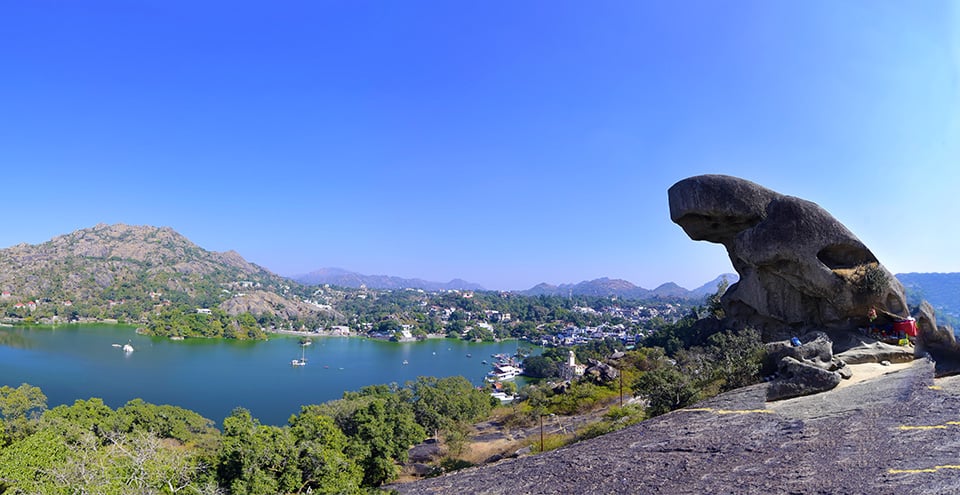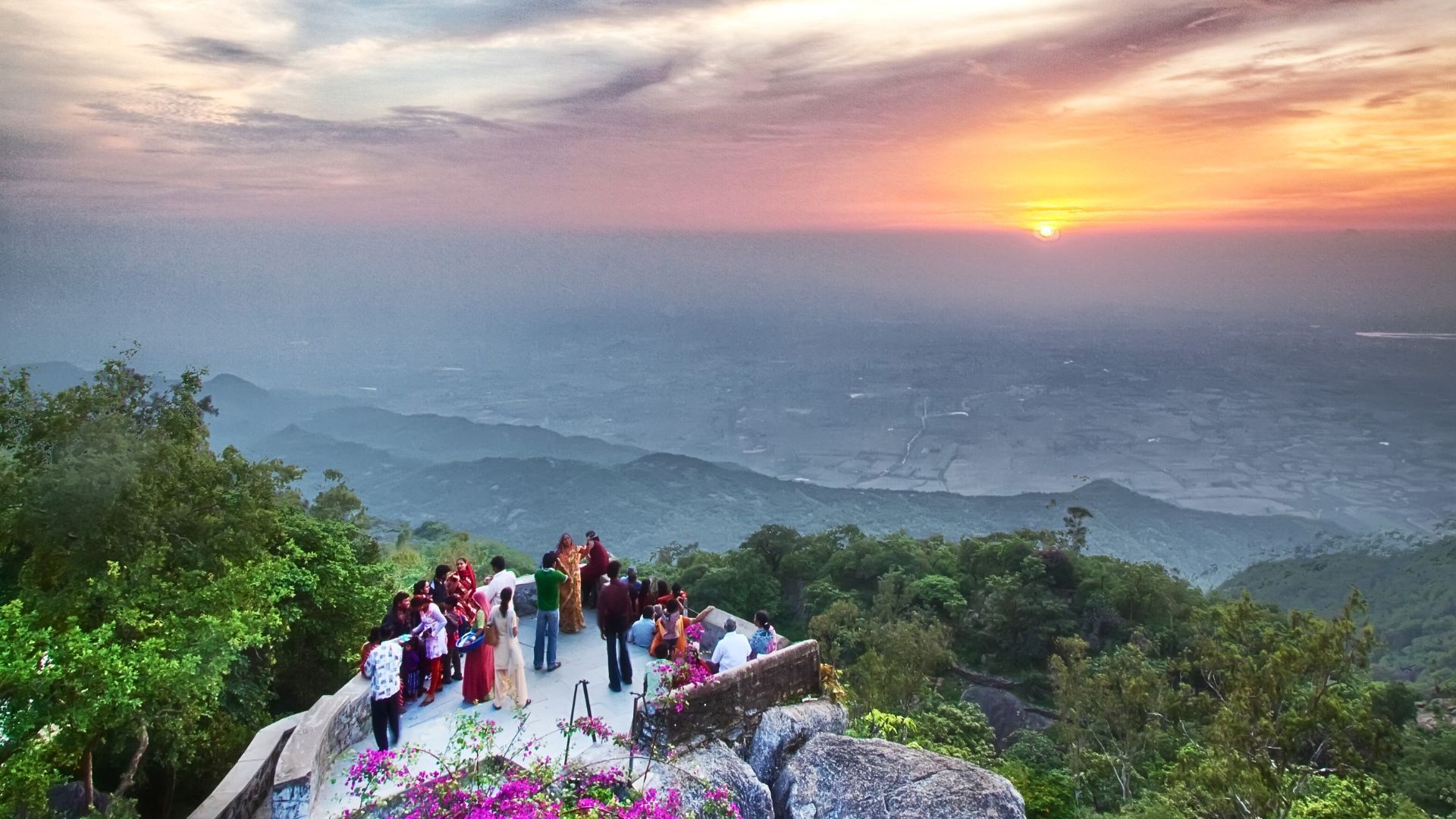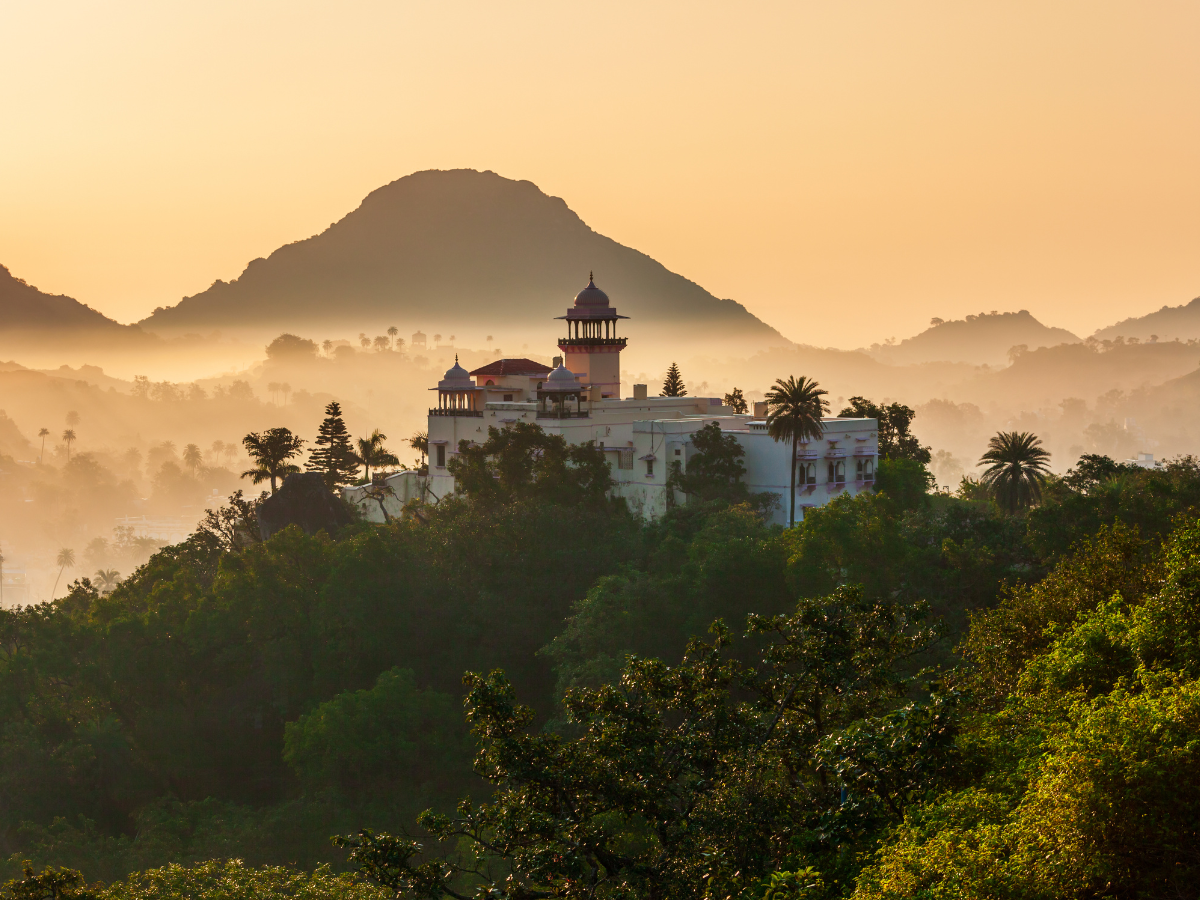Mount Abu Tour Package: Exploring Rajasthan's Highland Jewel
Published on February 10, 2025
Mount Abu Tour Package: Exploring Rajasthan's Highland Jewel
Nestled in the Aravalli Range, Mount Abu stands as a verdant oasis amidst Rajasthan's predominantly arid landscape, offering visitors a refreshing escape from the scorching desert heat. This picturesque hill station, perched at an elevation of 1,220 meters above sea level, serves as a natural air-conditioned retreat that has captivated travelers for centuries. The town's strategic location makes it easily accessible from major cities like Udaipur (185 km) and Ahmedabad (221 km), while its proximity to the Gujarat border adds to its unique cultural tapestry.
The significance of Mount Abu extends far beyond its geographical prominence. Historically, this highland sanctuary has been a favored summer destination for Rajput royalty, who sought refuge from the oppressive plains during the sweltering summer months. The town's cool climate, averaging 20-25°C even during peak summer, made it an ideal retreat for both ancient rulers and British colonial administrators alike. Today, this legacy continues as modern tourists flock to experience the perfect blend of historical grandeur and natural splendor that Mount Abu offers year-round. For those planning a visit, a Mount Abu tour package is an excellent way to explore this enchanting destination, ensuring a seamless and memorable experience.

What truly sets Mount Abu apart from other destinations in Rajasthan is its remarkable diversity of attractions. Unlike the state's famous desert cities, Mount Abu boasts lush greenery, cascading waterfalls, and serene lakes that create a completely different Rajasthan experience. The hill station seamlessly combines spiritual sanctuaries like the world-famous Dilwara Jain Temples with architectural marvels such as the Nakki Lake and Guru Shikhar peak. This unique juxtaposition of natural beauty, religious significance, and historical importance creates an unparalleled travel experience that appeals to nature enthusiasts, history buffs, and spiritual seekers alike.
Natural Splendors and Scenic Beauty
Mount Abu's natural beauty unfolds through its diverse landscapes and climatic conditions that transform dramatically throughout the year. During spring, the hill station bursts into vibrant life with wildflowers carpeting the slopes, while summer brings forth misty mornings and cool breezes that maintain comfortable temperatures even when the plains below simmer under 45°C heat. The monsoon season transforms Mount Abu into an emerald paradise, with waterfalls like Achalgarh and Hathiya Dev plunging down rocky cliffs, creating mesmerizing spectacles that draw nature lovers from across the country.
The region's flora presents a fascinating botanical tapestry, featuring over 820 species of plants, including rare medicinal herbs and towering coniferous trees. The Mount Abu Wildlife Sanctuary, spanning 290 square kilometers, serves as a crucial biodiversity hotspot where visitors might spot leopards, sloth bears, and sambar deer against the backdrop of dense forests. Birdwatchers particularly delight in spotting the Indian peafowl, paradise flycatcher, and various migratory species that find sanctuary in this protected area.
Water bodies play a pivotal role in shaping Mount Abu's scenic beauty, with Nakki Lake standing as the crown jewel among them. This man-made wonder, surrounded by majestic hills and dotted with boating facilities, creates perfect reflection views that have inspired countless artists and photographers. Nearby, the Toad Rock formation adds a whimsical touch to the landscape, while the Sunset Point offers breathtaking panoramic vistas that change hues with the setting sun. These natural elements combine to create an ever-changing canvas of beauty that keeps visitors enthralled throughout their stay.

Architectural Marvels and Historical Significance
Mount Abu's architectural heritage stands as a testament to the region's rich cultural past, with the Dilwara Jain Temples reigning supreme among its historical treasures. These marble masterpieces, constructed between the 11th and 13th centuries, represent the pinnacle of Jain temple architecture. The Vimal Vasahi and Luna Vasahi temples, in particular, showcase intricate marble carvings so delicate that they appear almost lace-like, depicting scenes from Jain mythology and daily life with astonishing precision. The temples' construction involved transporting marble from distant quarries using elephants, demonstrating the immense dedication and engineering prowess of their creators.
The Nakki Lake complex serves as another architectural highlight, featuring the iconic Raghunath Temple and the charming boat-shaped structure known as the "Toy Train." Built by the British during their colonial rule, these structures reflect a fusion of Victorian and local architectural styles. The nearby Gaumukh Temple, carved out of a single rock, adds to the site's spiritual significance while showcasing ancient rock-cut architecture techniques. The temple's natural spring, flowing from a cow's mouth sculpture, has been a sacred pilgrimage site for centuries.
Mount Abu's historical narrative extends beyond its religious monuments to include military fortifications like Achalgarh Fort. Built by Rana Kumbha in the 14th century, this formidable structure features massive gates and bastions that once protected the region from invasions. Within its walls lie several Jain temples and the famous Mandakini Kund, believed to be one of the sources of the Saraswati River. The fort's strategic position atop a hill provides commanding views of the surrounding valleys, making it both a defensive stronghold and a vantage point for appreciating the region's natural beauty.
These architectural wonders not only serve as tourist attractions but also as living museums that preserve Rajasthan's cultural heritage. They demonstrate how successive generations of rulers and communities have left their mark on the landscape, creating a unique blend of religious, military, and civic architecture that continues to inspire awe and reverence among visitors today.
Spiritual Retreats and Cultural Heritage
Mount Abu's spiritual landscape transcends mere architectural beauty, offering a profound journey into India's diverse religious traditions. The Brahma Kumari World Spiritual University, headquartered in the town, attracts thousands of international visitors annually who seek enlightenment through meditation and spiritual discourse. This global institution, founded in 1937, maintains numerous ashrams and meditation centers across the hill station, creating an atmosphere of tranquility and introspection that permeates the entire region. The university's white marble buildings and peaceful gardens provide an ideal environment for spiritual seekers from all faiths to explore inner peace and self-realization.

Local festivals in Mount Abu showcase the region's rich cultural tapestry through vibrant celebrations that blend Hindu, Jain, and tribal traditions. The Summer Festival, held annually in May-June, transforms the hill station into a riot of colors and sounds, featuring folk dances, music performances, and traditional crafts exhibitions. Particularly noteworthy are the Garba and Dandiya Raas performances, where locals and tourists alike participate in energetic dance routines that continue late into the night. The festival also includes boat races on Nakki Lake and a spectacular fireworks display that illuminates the surrounding hills.
The region's cultural heritage finds expression in its distinctive art forms and culinary traditions. Local artisans continue to practice traditional stone carving and miniature painting techniques passed down through generations, creating exquisite souvenirs that capture Mount Abu's essence. The local cuisine reflects a harmonious blend of Rajasthani and Gujarati influences, with specialties like dal-baati-churma and undhiyu being served alongside more contemporary offerings. Traditional music performances, often featuring the haunting melodies of the algoza (double flute) and rhythmic beats of the dholak, add to the cultural richness of the experience, creating an authentic connection to the region's artistic heritage.
Practical Travel Guide and Itinerary Suggestions
Planning a Mount Abu tour requires careful consideration of seasonal variations and accommodation options to ensure a memorable experience. The optimal time to visit spans from March to June and September to November, when the weather remains pleasant and most attractions are fully operational. During these months, daytime temperatures range from 20-30°C, perfect for sightseeing, while evenings offer cool breezes ideal for leisurely walks around Nakki Lake. Winter months (December to February) can be surprisingly cold, with temperatures occasionally dropping below 5°C, requiring warm clothing for early morning excursions to Guru Shikhar or sunset points.
Accommodation choices in Mount Abu cater to diverse preferences and budgets, ranging from heritage hotels housed in colonial-era buildings to modern resorts offering panoramic valley views. For those seeking luxury, properties like Hotel Hilltone and The Palace Heights Resort provide premium amenities including spa facilities and fine dining options. Mid-range travelers will find excellent value in establishments such as Hotel Ashoka and Hotel Aradhana, which balance comfort with affordability. Budget-conscious visitors can opt for guesthouses around the main market area or government-run hotels that offer basic yet clean accommodations starting from ₹1,500 per night.
/local-samosal/media/media_files/LSnZ5fUptjaMMe7vgVqM.png)
Transportation within Mount Abu primarily relies on taxis, auto-rickshaws, and battery-operated vehicles, with fixed rates available at major tourist spots. Visitors should negotiate prices beforehand or use official prepaid taxi services to avoid overcharging. For temple visits, modest attire covering shoulders and knees is mandatory, while comfortable walking shoes are essential for exploring the hilly terrain. Carrying light rain gear during monsoon months and warm layers for winter evenings ensures preparedness for changing weather conditions.
Adventure Activities and Unique Experiences
Mount Abu offers an array of adventure activities that transform the hill station into a playground for thrill-seekers and nature enthusiasts alike. Trekking opportunities abound, with trails ranging from gentle walks to challenging hikes. The path to Guru Shikhar, Rajasthan's highest peak at 1,722 meters, presents a moderate three-hour trek through dense forests and rocky terrain, rewarding climbers with panoramic views of the Aravalli Range. For less strenuous options, the treks to Toad Rock and Sunset Point provide equally stunning vistas while demanding less physical exertion. These trails often reveal hidden waterfalls and rare wildlife sightings, making each journey uniquely rewarding.
Wildlife enthusiasts find Mount Abu's biosphere reserve particularly captivating, home to over 250 bird species and numerous mammals. Early morning safaris through the Mount Abu Wildlife Sanctuary offer chances to spot leopards, sloth bears, and sambar deer in their natural habitat. Specialized birdwatching tours, led by experienced naturalists, take visitors through prime birding locations where species like the Indian pitta and paradise flycatcher can be observed. Night safaris present a different perspective, focusing on nocturnal creatures and the forest's after-dark symphony of sounds.
Unique experiences extend beyond conventional tourism offerings. Visitors can participate in guided rock climbing sessions at specialized sites like the Elephant Rock formation, learning basic climbing techniques while enjoying breathtaking views. Adventure camps organized near Nakki Lake provide opportunities for zip-lining, rappelling, and camping under the stars. For those seeking cultural immersion, traditional craft workshops allow participants to learn local arts like stone carving and miniature painting from master artisans. Additionally, wellness retreats at Ayurvedic centers offer rejuvenating treatments using herbal medicines sourced from the surrounding forests, providing a holistic approach to relaxation and health enhancement.
Local Insights and Hidden Gems
Beyond the well-trodden tourist paths, Mount Abu reveals its true character through lesser-known attractions and authentic local experiences. The Honey Falls, located about 8 kilometers from the main town, remains relatively undiscovered by mainstream tourists, offering a tranquil spot for picnics and photography away from crowds. Similarly, the secluded Trevors Tank, nestled deep within the wildlife sanctuary, serves as a perfect hideaway for nature lovers and birdwatchers seeking solitude. These hidden gems provide intimate encounters with Mount Abu's natural beauty without the commercialization found at more popular sites.
Local markets, particularly the bustling Bikanerwala Market and the quieter lanes near Ambika Mata Temple, offer genuine insights into everyday life in Mount Abu. Here, visitors can interact with traditional artisans crafting marble sculptures and hand-painted textiles, observing age-old techniques passed through generations. Family-run eateries tucked away in these areas serve authentic local delicacies like kadhi-chawal and pitod, providing a taste of home-cooked Rajasthani cuisine that differs markedly from tourist-oriented restaurants. Engaging with shopkeepers and residents often leads to unexpected invitations to participate in community events or witness traditional ceremonies, creating meaningful connections and memories.
For those seeking authentic cultural immersion, timing visits to coincide with local festivals proves invaluable. The Teej festival, celebrated with particular fervor in August, showcases traditional Rajasthani customs through elaborate processions and folk performances that aren't typically part of organized tourist programs. Participating in these celebrations, whether by joining the dancing circles or simply observing the vibrant rituals, offers a window into Mount Abu's soul that no guidebook can replicate. Additionally, visiting during weekdays rather than weekends helps avoid crowds and allows for more personal interactions with local vendors and artisans at various sites.
Conclusion: Embracing Mount Abu's Timeless Charm
Mount Abu's enduring appeal lies in its remarkable ability to satisfy diverse traveler preferences while maintaining its authentic character. Whether seeking spiritual enlightenment at the Dilwara Temples, thrilling adventures in the wildlife sanctuary, or simple moments of tranquility by Nakki Lake, this hill station offers something profoundly meaningful for every visitor. The seamless integration of natural beauty, architectural splendor, and cultural richness creates an experience that transcends typical tourist destinations, leaving lasting impressions that linger long after departure.
The importance of experiencing Mount Abu firsthand cannot be overstated. Photographs and descriptions merely scratch the surface of what awaits those who venture into its misty hills and vibrant markets. The crisp mountain air carrying the scent of pine, the melodic calls of exotic birds echoing through ancient forests, and the warmth of local hospitality create a sensory tapestry that must be personally encountered to be fully appreciated. Each sunrise over the Aravalli Range and each twilight reflected in Nakki Lake's waters tells a story that words alone cannot capture.
As Rajasthan's highland jewel continues to enchant new generations of travelers, its preservation becomes increasingly vital. Responsible tourism practices, respect for local traditions, and sustainable exploration ensure that Mount Abu's magic remains intact for future visitors. Those who answer the call of this extraordinary hill station by opting for a Mount Abu tour package from Delhi embark on more than just a vacation – they engage in a transformative journey that connects them with nature's beauty, human creativity, and spiritual depth in ways that few destinations can match.

